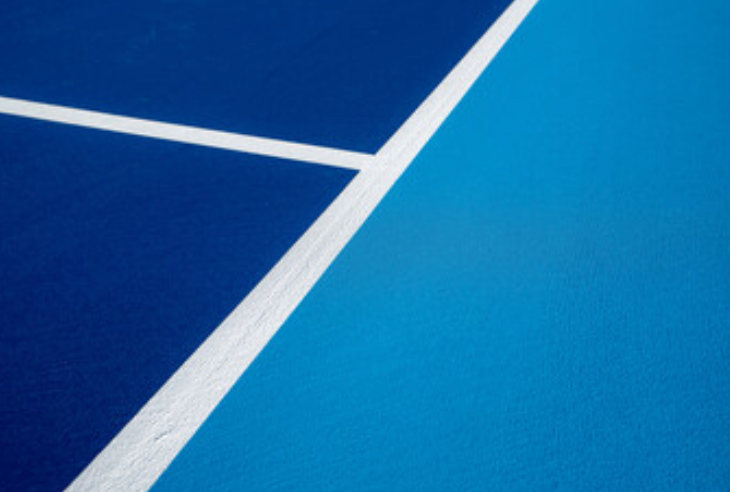Last Updated on November 20, 2025 by Drew Pierce
Recently, I’ve been adding pickleball drills that resemble real-game situations to my repertoire, and skinny singles pickleball is just what the doctor ordered! Covering dinks, drives, drops, serves, and volleys is all part of the game, and since the game only requires half the court, you only need one additional person to play.
Skinny singles allows you to work on the shots and strategies you’d use in doubles rather than singles. And because you’re playing without a partner, you’ll be hitting all the shots on your side, giving you twice the practice! But that also means you’re on your own if things go wrong. 🙂

How to Play Skinny Singles Pickleball
To play skinny singles, the game is scored like regular singles, but there’s one key difference: you can only hit the ball crosscourt into your opponent’s half of the court. If you don’t hit it crosscourt into the right half (depending on the score), it’s a fault.
For example, if the first server starts serving from the even side at 0-0, the serve is hit crosscourt into the opponent’s even side. From there, all shots must be hit crosscourt, from the even side to the even side when the server’s score is even and from the odd side to the odd side when the server’s score is odd.
Skinny singles resembles doubles because each player covers only about 10 feet, so the shots and strategies are similar. Hard-driving passing shots are less effective, and drop shots and dinks become more common. You can practice almost every shot from your doubles game in skinny singles, including serves and returns.
Pickleball Skinny Singles Rules
One rule modification often used in skinny singles allows for around-the-post (ATP) shots, even if they don’t go crosscourt into the appropriate half of your opponent’s court. This modification emphasizes that hitting sharp crosscourt dinks might not be the best choice and could result in easy, rally-ending ATPs for your opponent.
There’s also a variation of skinny singles for practicing down-the-line drop shots and volleys. In this version, each player is positioned on the side of their court based on their own score. For instance, if the score is 2-2, both the server and return-of-server will be positioned on their even sides, and rallies are played crosscourt from even side to even side. If the score is 3-2, the server is on the odd side, and the return-of-server is on the even side, resulting in rallies played straight across from each other.
Skinny singles is an excellent drill for when only two people are available to play, and it closely mimics doubles shots and strategies. It’s also a great warm-up drill to use with your partner before a tournament match.
A few local clubs in my area also allow you to book half a court, making the game accessible to even more players.

Skinny Singles Pickleball Variations
As I’ve been playing skinny singles, I’ve realized that you can add some extra rules or modifications to make the game even more challenging or fun, depending on your preferences and skill level. Here are a few ideas:
- Serve restrictions: Limit the type of serves allowed, such as underhand serves only, or require a specific serve like a high-arcing lob serve. This can help you improve particular serving techniques.
- Two-bounce rule: Just like in regular pickleball, enforce the two-bounce rule. This will encourage better court positioning and anticipation, as well as force you to think more strategically about your shot selection.
- Forced third shot drop: Require a third shot drop on every point. This rule helps you practice and perfect your third shot drop, which is essential in high-level pickleball play.
- Scoring variations: You can modify the scoring system to focus on specific aspects of the game. For example, you could play to 7 or 11 points, or award bonus points for hitting specific targets or executing challenging shots.
- Crosscourt or down-the-line shots only: Limit the types of shots that can be played, forcing you to focus on specific strategies or shot patterns.
- Target practice: Place targets on the court, such as cones or small objects, and award points for hitting them. This can help improve your accuracy and shot placement.
- Time limit: Add a time constraint to your game, forcing you to think and react quickly. This can help you develop a sense of urgency and improve your decision-making under pressure.
Remember, the primary goal of skinny singles is to improve your skills and strategies. Feel free to adjust or create rules that cater to your specific needs and objectives in order to maximize your practice sessions.
So, grab a friend and start practicing skinny singles on the court!
